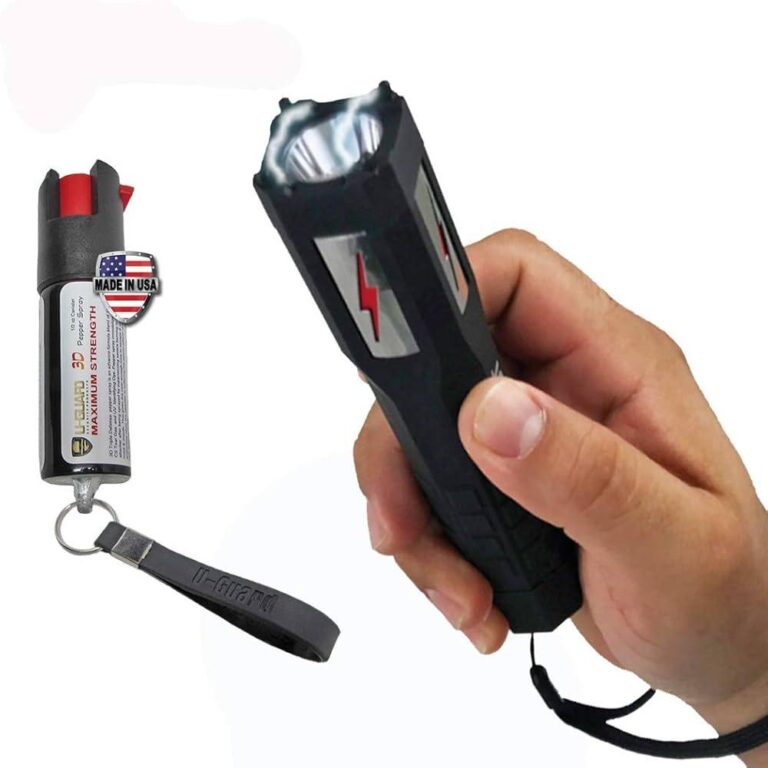Table of Contents
- Effectiveness in Self-Defense Situations
- Comparing Safety and Risk Factors
- Ease of Use and Practical Considerations
- Expert Recommendations for Choosing the Right Tool
- Insights and Conclusions
Effectiveness in Self-Defense Situations
When assessing tools for personal protection, the primary goal is to neutralize threats quickly and efficiently. Stun guns offer an immediate incapacitation effect by delivering an electric shock that interferes with the attacker’s muscle functions. This non-lethal approach provides the user crucial seconds to escape without engaging in physical combat. Moreover, stun guns require minimal strength or training, making them accessible for individuals of various ages and abilities. However, their effectiveness can depend on factors such as the attacker’s clothing and the contact duration, which can sometimes reduce the impact.
Blunt force tools, on the other hand, rely on physical impact to deter or disable an assailant. These include items like batons, heavy flashlights, or everyday objects adapted for defense. The advantage lies in their simplicity and the ability to cause pain or damage through direct strikes. Key benefits include:
- Immediate tactile response: Enables the defender to stay at a distance or control the confrontation.
- Durability and readiness: Often mechanical with no batteries required.
- No reliance on electrical charge: Consistent performance under any conditions.
Comparing Safety and Risk Factors
When evaluating self-defense options, safety remains paramount. Stun guns offer a non-lethal approach designed to incapacitate an assailant quickly, reducing the likelihood of severe injury. Their electrical discharge is targeted to disrupt muscle control without causing permanent harm. However, the risk factors include potential malfunctions, misfires, or improper usage, which could inadvertently injure the user or fail to deliver the intended effect. Additionally, stun guns require close proximity, which may introduce higher personal danger during confrontations.
Conversely, blunt force tools such as batons or heavy objects rely on physical impact, which carries a different set of safety considerations. These tools can cause more significant bodily harm, raising concerns about legal liabilities and ethical use. They are typically easier to deploy under stress, thanks to their straightforward operation, but can result in unintended injuries if used improperly. Key risk factors include:
- Legal restrictions: Vary by jurisdiction and may limit possession or use.
- Escalation potential: Increased chance of escalating violence during an encounter.
- Injury severity: Potential for lasting physical damage to both attacker and defender.
Ease of Use and Practical Considerations
When considering self-defense tools, ease of use is paramount, especially in high-stress situations where every second counts. Stun guns are designed with simplicity in mind; most models feature an intuitive on/off switch and require merely a direct contact to deliver a non-lethal electric shock. This immediacy and straightforward operation make stun guns accessible even to users with minimal training. In contrast, blunt force tools-such as bats or clubs-demand a higher level of physical coordination, accuracy, and strength to be effective. The risk of missing a target or delivering an insufficient blow can compromise personal safety, particularly for those without prior experience or physical robustness.
Practical considerations also extend to portability and legal restrictions. Stun guns are generally compact, lightweight, and easy to conceal, fitting comfortably into pockets or bags, which increases their appeal for everyday carry. However, it’s crucial to be mindful of regional laws, as some jurisdictions restrict or regulate stun gun ownership and use. On the other hand, blunt force tools are often bulkier and less convenient to carry discreetly, limiting their everyday practicality. Additionally, their conspicuous nature may escalate conflicts rather than de-escalate them, an important factor to weigh when selecting a personal defense method.
- Stun Gun: Quick activation, user-friendly, compact, possibly regulated by law
- Blunt Force Tools: Requires skill and strength, bulkier, less discreet, may escalate situations
Expert Recommendations for Choosing the Right Tool
Choosing the right self-defense tool depends largely on your environment, physical ability, and comfort level. Experts consistently emphasize prioritizing tools that offer ease of use and quick deployment under pressure. For instance, stun guns are highly recommended for individuals seeking a non-lethal, portable option that requires minimal physical strength but provides immediate incapacitation by disrupting nervous system signals. Conversely, blunt force tools like batons or tactical flashlights demand greater physical engagement yet offer versatility, durability, and can serve as everyday carry items without raising suspicion.
When making your selection, consider additional factors such as legal restrictions in your area, your training commitment, and psychological readiness. Some professionals suggest a layered approach-carrying a stun gun for rapid response combined with a blunt force tool for close-quarters defense. Remember to invest in quality equipment from reputable brands and prioritize hands-on practice to build confidence and skill. Here are some key points to keep in mind:
- Legal Compliance: Ensure your tool is permitted in your jurisdiction to avoid unintentional legal consequences.
- Training: Regular practice enhances effectiveness and reduces hesitation during critical moments.
- Portability: Choose a tool that fits comfortably with your lifestyle and daily activities.
- Maintenance: Select low-maintenance devices to ensure reliability when you need them most.
Insights and Conclusions
In the end, the choice between stun guns and blunt force tools hinges on context, intent, and user capability. Stun guns offer a high-tech, non-lethal approach with the advantage of quick incapacitation, while blunt force tools rely on physical strength and accuracy but can be equally effective in hands trained to use them. Understanding the strengths and limitations of each can help individuals make informed decisions about personal safety or security measures. Whether you prioritize ease of use, legal considerations, or the type of threat you anticipate, evaluating these factors carefully will guide you toward the most effective tool for your needs. Stay safe and stay prepared.Check Our Other Blogs
- StunGun – Your Trusted Source for Stun Guns, Laws, and Self-Defense Tips
- PepperSprayLaws – Your Trusted Resource for Pepper Spray Information
- StunGunLaws – Your Trusted Guide to Stun Gun Legality and Safety





